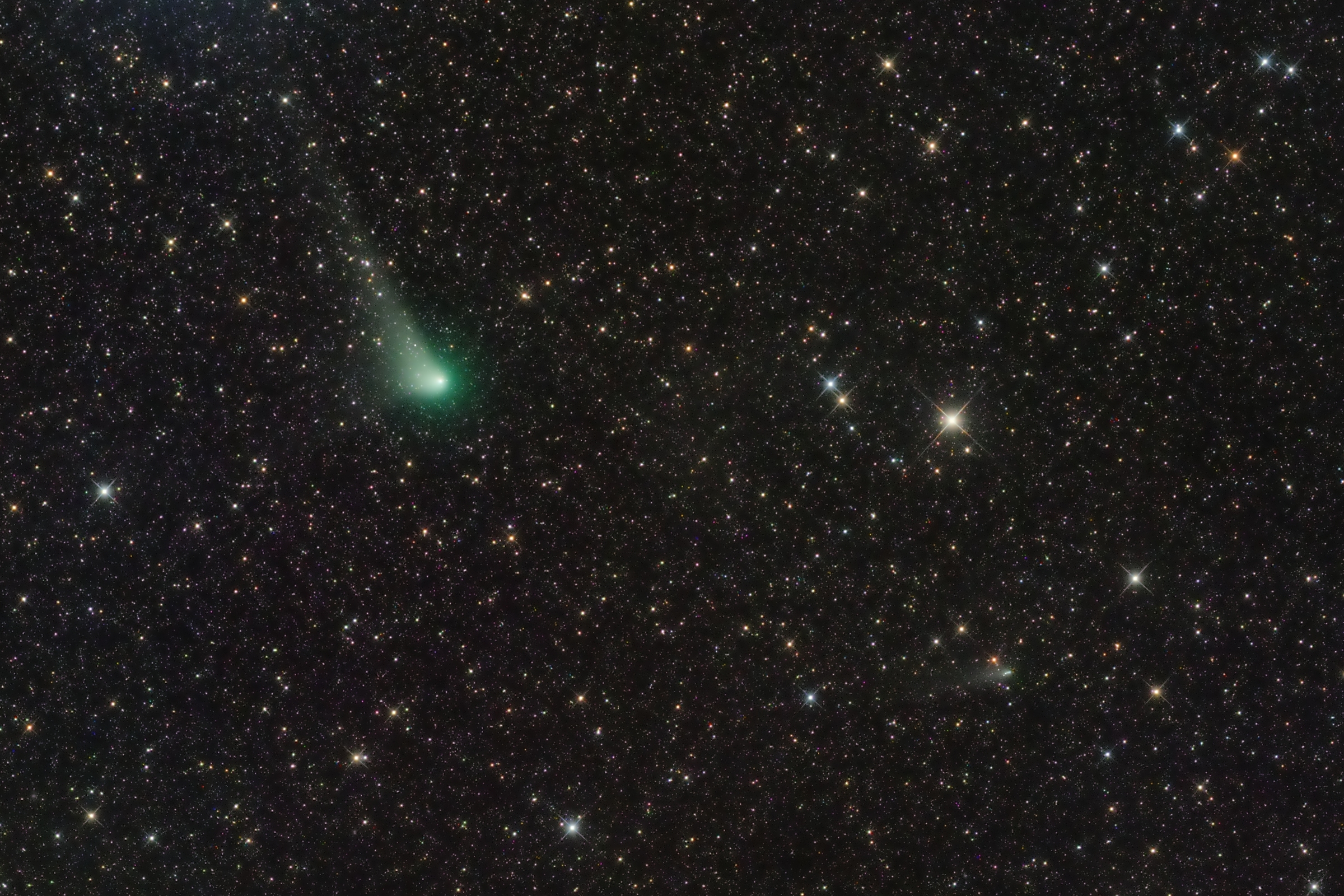Blog
Harry “Sweets” Edison (October 10, 1915 – July 27, 1999) was an American jazz trumpeter and a member of the Count Basie Orchestra. His most important contribution was as a Hollywood studio musician, whose muted trumpet can be heard backing singers, most notably Frank Sinatra.
Edison was born in Columbus, Ohio, United States. He spent his early childhood in Louisville, Kentucky, being introduced to music by an uncle. After moving back to Columbus at the age of twelve, the young Edison began playing the trumpet with local bands.
In 1933, he became a member of the Jeter-Pillars Orchestra in Cleveland. Afterwards, he played with the Mills Blue Rhythm Band and Lucky Millinder. In 1937, he moved to New York and joined the Count Basie Orchestra. His colleagues included Buck Clayton, Lester Young (who named him “Sweets”), Buddy Tate, Freddie Green, Jo Jones, and other original members of that famous band.
more...Gusting solar winds and blasts of charged particles from the Sun resulted in several rewarding nights of auroras back in 2014 December, near the peak of the last 11-year solar cycle. The featured image captured dramatic auroras stretching across a sky near the town of Yellowknife in northernCanada. The auroras were so bright that they not only inspired awe, but were easily visible on an image exposure of only 1.3 seconds. A video takenconcurrently shows the dancing sky lights evolving in real time as tourists, many there just to see auroras, respond with cheers. The conical dwellings on the image right are tipis, while far in the background, near the image center, is the constellation of Orion. Auroras may increase again over the next few years as our Sunagain approaches solar maximum.
Kenny Garrett (born October 9, 1960 Detroit, MI) is an American post-bop jazzmusician and composer who gained recognition in his youth as a member of the Duke Ellington Orchestra and for his time with Miles Davis‘s band. His primary instruments are alto and soprano saxophone and flute. Since 1985, he has pursued a solo career.
more...John Winston Ono Lennon (born John Winston Lennon; 9 October 1940 – 8 December 1980) was an English singer, songwriter, musician and peace activist who achieved worldwide fame as the founder, co-songwriter, co-lead vocalist and rhythm guitarist of the Beatles. Lennon was characterised by the rebellious nature and acerbic wit in his music, writing and drawings, on film, and in interviews. His songwriting partnership with Paul McCartney remains the most successful in history.
more...Dionisio Ramón Emilio Valdés Amaro (October 9, 1918 – March 22, 2013), better known as Bebo Valdés, was a Cuban pianist, bandleader, composer and arranger. He was a central figure in the golden age of Cuban music, especially due to his big band arrangements and compositions of mambo, chachacháand batanga, a genre he created in 1952.
more...Abdullah Ibrahim (born Adolph Johannes Brand on 9 October 1934 and formerly known as Dollar Brand) is a South African pianist and composer. His music reflects many of the musical influences of his childhood in the multicultural port areas of Cape Town, ranging from traditional African songs to the gospel of the AME Church and Ragas, to more modern jazz and other Western styles. Ibrahim is considered the leading figure in the subgenre of Cape jazz. Within jazz, his music particularly reflects the influence of Thelonious Monk and Duke Ellington. He is known especially for “Mannenberg“, a jazz piece that became a notable anti-apartheid anthem.
During the apartheid era in the 1960s Ibrahim moved to New York City and, apart from a brief return to South Africa in the 1970s, remained in exile until the early ’90s. Over the decades he has toured the world extensively, appearing at major venues either as a solo artist or playing with other renowned musicians, including Max Roach, Carlos Ward and Randy Weston, as well as collaborating with classical orchestras in Europe. With his wife, the jazz singer Sathima Bea Benjamin, he is father to the New York underground rapper Jean Grae, as well as to a son, Tsakwe.
Ibrahim was born in Cape Town, South Africa, on 9 October 1934, and was baptized Adolph Johannes Brand. He attended Trafalgar High School in Cape Town’s District Six, and began piano lessons at the age of seven, making his professional debut at 15.[2] He is of mixed-race heritage, making him a Coloured person according to the apartheid system. His mother played piano in a church, the musical style of which would remain an influence; in addition, he learned to play several genres of music during his youth in Cape Town, including marabi, mbaqanga, and American jazz. He became well known in jazz circles in Cape Town and Johannesburg. In 1959 and 1960, Ibrahim played with the Jazz Epistles group in Sophiatown, alongside saxophonist Kippie Moeketsi, trumpeter Hugh Masekela, trombonist Jonas Gwangwa (who were all in the orchestra of the musical King Kong that opened in Johannesburg in February 1959).
more...Yusef Abdul Lateef (born William Emanuel Huddleston; October 9, 1920 – December 23, 2013) was an American jazz multi-instrumentalist, composer, and prominent figure among the Ahmadiyya Community in America.
Although Lateef’s main instruments were the tenor saxophone and flute, he also played oboe and bassoon, both rare in jazz, and non-western instruments such as the bamboo flute, shanai, shofar, xun, arghul and koto. He is known for having been an innovator in the blending of jazz with “Eastern” music. Peter Keepnews, in his New York Times obituary of Lateef, wrote that the musician “played world music before world music had a name”.
Lateef’s books included two novellas entitled A Night in the Garden of Love and Another Avenue, the short story collections Spheres and Rain Shapes, also his autobiography, The Gentle Giant, written in collaboration with Herb Boyd. Along with his record label YAL Records, Lateef owned Fana Music, a music publishing company. Lateef published his own work through Fana, which includes Yusef Lateef’s Flute Book of the Blues and many of his own orchestral compositions.
Lateef was born in Chattanooga, Tennessee as William Emanuel Huddleston. His family moved, in 1923, to Lorain, Ohio, and again in 1925, to Detroit, Michigan, where his father changed the family’s name to Evans.
more...Heading for its closest approach to the Sun or perihelion on December 20, comet C/2017 K2 (PanSTARRS) remains a sight for telescopic observers as it sweeps through planet Earth’s southern hemisphere skies. First time visitor from the remote Oort cloud this comet PanSTARRS sports a greenish coma and whitish dust tail about half a degree long at the upper left in a deep image from September 21. It also shares the starry field of view toward the constellation Scorpius with another comet, 73P/Schwassmann-Wachmann 3, seen about 1 degree below and right of PanSTARRS. Astronomers estimate that first time visitor comet C/2017 K2 (PanSTARRS) has been inbound from the Oort cloud for some 3 million years along a hyperbolic orbit. Schwassmann-Wachmann 3 is more familiar though. The periodic comet loops through its own elliptical orbit, from just beyond the orbit of Jupiter to the vicinity of Earth’s orbit, once every 5.4 years. Just passing in the night, this comet PanSTARRS is about 20 light-minutes from Earth in the September 21 image. Seen to be disintegrating since 1995, Schwassmann-Wachmann 3 was about 7.8 light-minutes away.

Al Duncan (October 8, 1927, McKinney, Texas — January 3, 1995, Las Vegas) was an American drummer and songwriter. Music critic and musicologist Eugene Chadbourne described Duncan as a “forefather of rhythm and blues” and “one of less than a half dozen key studio legends of the 1950s and 1960s who have sometimes been called the ‘grandfathers of groove’.” Chadbourne credited Duncan as helping develop the characteristic metric feel or timekeeping of rhythm and blues. His work is featured on recordings with Roy Buchanan, Billy “The Kid” Emerson, Buddy Guy, Dale Hawkins, Red Holloway, Camille Howard, Horace Palm, Jimmy Reed, Phil Upchurch, and Rob Wasserman among others.[2] Of the songs he penned, the best known is “It’s Too Late, Brother” which has become a blues staple.
more...Park Frederick “Pepper” Adams III (October 8, 1930 – September 10, 1986) was an American jazz baritone saxophonist and composer. He composed 42 pieces, was the leader on eighteen albums spanning 28 years, and participated in 600 sessions as a sideman. He worked with an array of musicians, and had especially fruitful collaborations with trumpeter Donald Byrd and as a member of the Thad Jones/Mel Lewis Big Band.
Pepper Adams was born in Highland Park, Michigan, to father Park Adams II, who worked as the manager of a furniture store, and mother Cleo Marie Coyle.Both of his parents were college graduates, with each spending some time at the University of Michigan. Due to the onset of the Great Depression, Adams’ parents separated to allow his father to find work without geographic dependence. In the fall of 1931, Adams moved with his mother to his extended family’s farm near Columbia City, Indiana, where food and support were more readily available. In 1933, Adams began playing piano. His father having reunited with the family, they moved to Rochester, New York, in 1935 and in that city he began his musical efforts on tenor sax and clarinet.
more...The Orion Nebula (also known as Messier 42, M42, or NGC 1976) is a diffuse nebula situated in the Milky Way, being south of Orion’s Belt in the constellation of Orion. It is one of the brightest nebulaeand is visible to the naked eye in the night sky with apparent magnitude 4.0. It is 1,344 ± 20 light-years(412.1 ± 6.1 pc) away and is the closest region of massive star formation to Earth. The M42 nebula is estimated to be 24 light-years across (so its apparent size from Earth is approximately 1 degree). It has a mass of about 2,000 times that of the Sun. Older texts frequently refer to the Orion Nebula as the Great Nebula in Orion or the Great Orion Nebula. This image from JWST.

more...
John J. Mellencamp (born October 7, 1951 Seymour, IN), previously known as Johnny Cougar, John Cougar, and John Cougar Mellencamp, is an American singer-songwriter. He is known for his catchy brand of heartland rock, which emphasizes traditional instrumentation.
Mellencamp rose to fame in the 1980s while “honing an almost startlingly plainspoken writing style” that, starting in 1982, yielded a string of Top 10 singles, including “Hurts So Good“, “Jack & Diane“, “Crumblin’ Down“, “Pink Houses“, “Lonely Ol’ Night“, “Small Town“, “R.O.C.K. in the U.S.A.“, “Paper in Fire“, and “Cherry Bomb“. He has amassed 22 Top 40 hits in the United States. In addition, he holds the record for the most tracks by a solo artist to hit number one on the Hot Mainstream Rock Tracks chart, with seven. Mellencamp has been nominated for 13 Grammy Awards, winning one. His latest album of original songs, Strictly a One-Eyed Jack, was released on January 21, 2022. Mellencamp has sold over 30 million albums in the US and over 60 million worldwide.
Mellencamp is also one of the founding members of Farm Aid, an organization that began in 1985 with a concert in Champaign, Illinois, to raise awareness about the loss of family farms and to raise funds to keep farm families on their land. Farm Aid concerts have remained an annual event over the past 37 years, and as of 2022 the organization has raised over $60 million.
Mellencamp was inducted into the Rock and Roll Hall of Fame in 2008, followed by an induction into the Songwriters Hall of Fame in 2018.
more...Yo-Yo Ma (Chinese: 馬友友 Ma Yo Yo; born October 7, 1955) is an American cellist. Born in Paris to Chinese parents and educated in New York City, he was a child prodigy, performing from the age of four and a half. He graduated from the Juilliard School and Harvard University and attended Columbia University and has performed as a soloist with orchestras around the world. He has recorded more than 90 albums and received 19 Grammy Awards.
In addition to recordings of the standard classical repertoire, Ma has recorded a wide variety of folk music, such as American bluegrass music, traditional Chinese melodies, the tangos of Argentine composer Astor Piazzolla, and Brazilian music. He has collaborated with artists in diverse genres, including the singer Bobby McFerrin, the guitarist Carlos Santana, Sérgio Assad and his brother, Odair, and the singer-songwriter-guitarist James Taylor. Ma’s primary performance instrument is a 1733 Montagnana cello valued at US$2.5 million.
Ma has been a United Nations Messenger of Peace since 2006. He was awarded The Glenn Gould Prize in 1999, the National Medal of Arts in 2001, the Presidential Medal of Freedom in 2011, and the Polar Music Prize in 2012. Ma was named one of Time‘s 100 Most Influential People of 2020.
Ma’s mother, Marina Lu, was a singer, and his father, Hiao-Tsiun Ma, was a violinist, composer and professor of music at Nanjing National Central University (now relocated in Taoyuan, Taiwan; predecessor of the present-day Nanjing University and Southeast University). They both migrated from the Republic of China to France during the Chinese Civil War.
more...Larry Young (also known as Khalid Yasin [Abdul Aziz]; October 7, 1940 – March 30, 1978) was an American jazz organist and occasional pianist. Young’s early work was strongly influenced by the soul jazz of Jimmy Smith, but he later pioneered a more experimental, modal approach to the Hammond B-3.
Born and raised in Newark, New Jersey, United States, Young attended Newark Arts High School, where he began performing with a vocal group and a jazz band.
Young played with various R&B bands in the 1950s, before gaining jazz experience with Jimmy Forrest, Lou Donaldson, Kenny Dorham, Hank Mobleyand Tommy Turrentine. Recording as a leader for Prestige from 1960, Young made a number of soul jazz discs, Testifying, Young Blues and Groove Street. When Young signed with Blue Note around 1964, his music began to show the marked influence of John Coltrane. In this period, he produced his most enduring work. He recorded several times as part of a trio with guitarist Grant Green and drummer Elvin Jones, who were occasionally augmented by additional players. Most of these albums were released under Green’s name, though Into Somethin’ (with Sam Rivers on saxophone) became Young’s Blue Note debut. In March 1978, he checked into the hospital for stomach pains. He died there on March 30, 1978, while being treated for what is said to be pneumonia. However, the actual cause of his death is unclear.
more...More Posts
- The Cosmos with NGC 6872 & IC 4970
- Paul McCartney Day
- William Hooker Day
- Rudy Rutherford Day
- World Fusion with Manika Kaur
- Daily Roots with the Congos
- Happy Fathers Day 2018
- The Cosmos with RCW 108
- Chuck Rainey Day
- Sing Miller Day
- World Music with Corvus Corax
- Daily Roots with ITSJAHMIEL
- The Cosmos with NGC 3372
- Lucky Thompson Day
- World Music with Sherrifo Konteh
- Daily Roots with Culture
- The Cosmos with NGC 3190
- Jaki Byard Day
- Erroll Garner Day